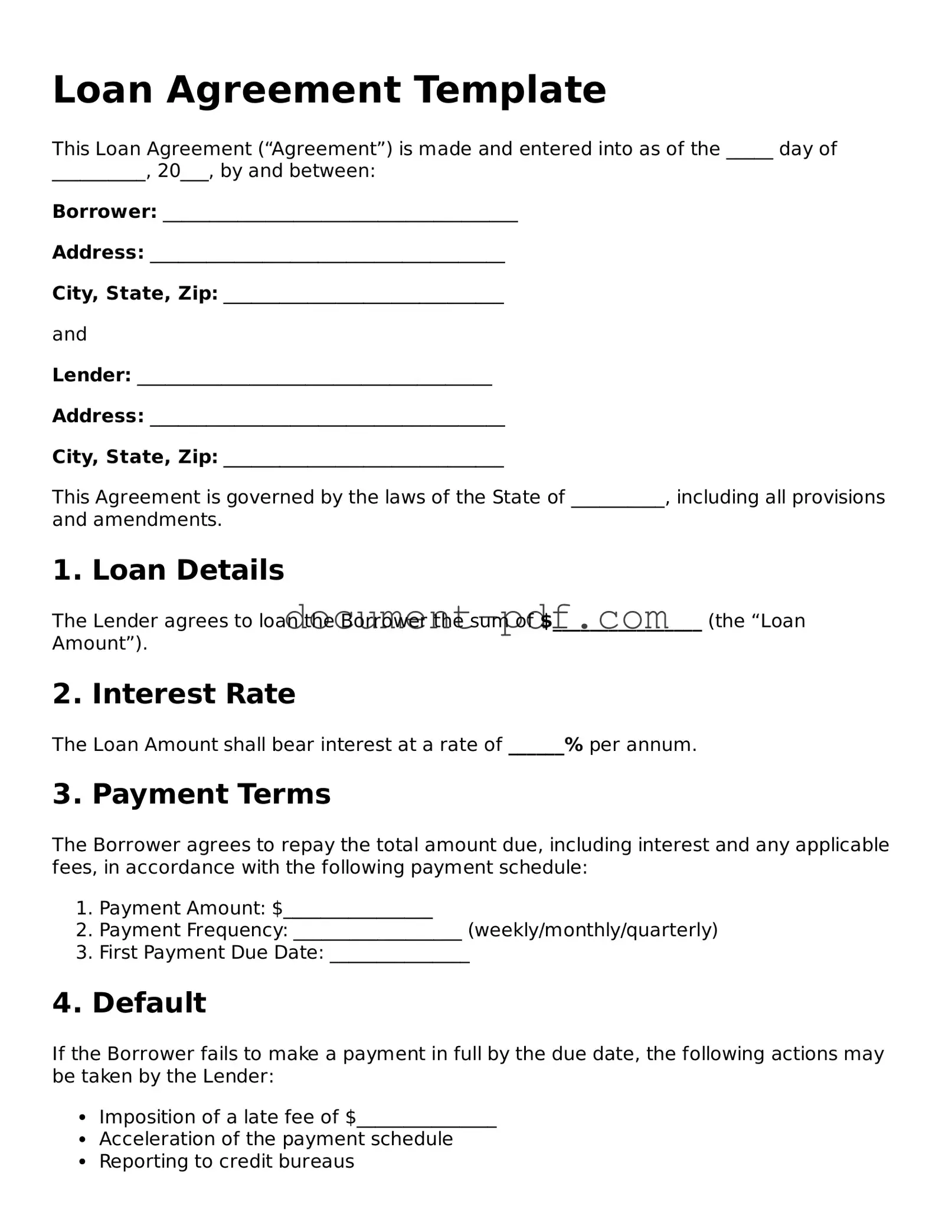Loan Agreement Template
This Loan Agreement (“Agreement”) is made and entered into as of the _____ day of __________, 20___, by and between:
Borrower: ______________________________________
Address: ______________________________________
City, State, Zip: ______________________________
and
Lender: ______________________________________
Address: ______________________________________
City, State, Zip: ______________________________
This Agreement is governed by the laws of the State of __________, including all provisions and amendments.
1. Loan Details
The Lender agrees to loan the Borrower the sum of $________________ (the “Loan Amount”).
2. Interest Rate
The Loan Amount shall bear interest at a rate of ______% per annum.
3. Payment Terms
The Borrower agrees to repay the total amount due, including interest and any applicable fees, in accordance with the following payment schedule:
- Payment Amount: $________________
- Payment Frequency: __________________ (weekly/monthly/quarterly)
- First Payment Due Date: _______________
4. Default
If the Borrower fails to make a payment in full by the due date, the following actions may be taken by the Lender:
- Imposition of a late fee of $_______________
- Acceleration of the payment schedule
- Reporting to credit bureaus
5. Governing Law
This Agreement shall be governed by the laws of the State of __________. Both parties hereby consent to the exclusive jurisdiction of the courts in this state.
6. Miscellaneous
No amendments or modifications to this Agreement shall be valid unless in writing and signed by both parties.
This Agreement constitutes the entire understanding between the parties with respect to this loan arrangement.
IN WITNESS WHEREOF, the parties hereto have executed this Loan Agreement as of the day and year first above written.
______________________________
______________________________
Date: ______________________
